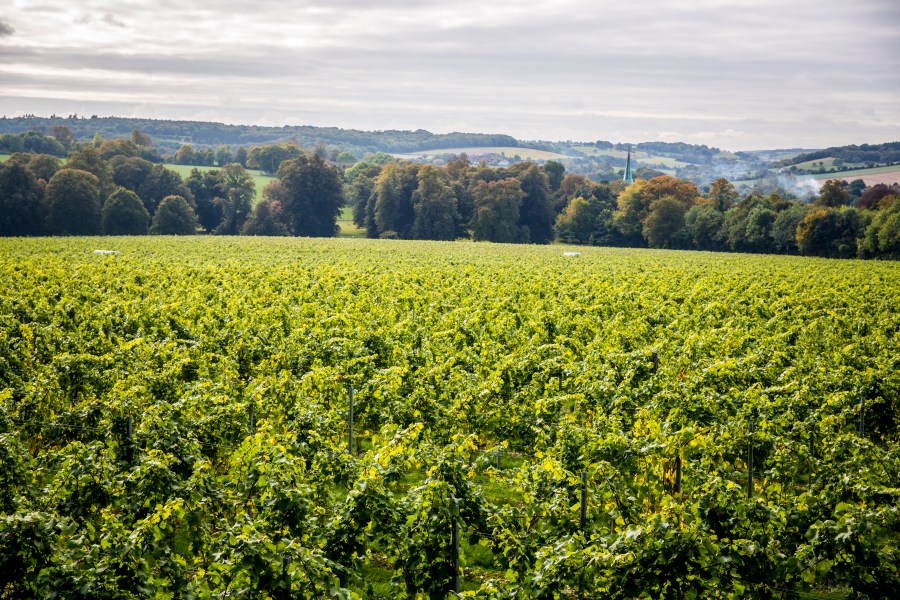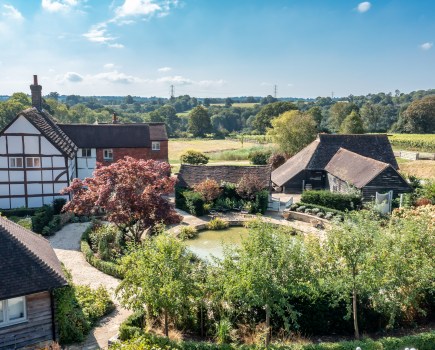In the last seven years the area under vines has doubled to over 3,500 hectares and there is no sign this trend is slowing down. It’s hardly surprising there is a loud buzz; with 500 commercial vineyards and 170 wineries there is a surge of optimism rarely found in traditional farming sectors.
What is fuelling the growth? To start, 60% of adults choose wine over all alternatives. This partly explains why spending on alcoholic drinks rose by nearly 3% between 2013 and 2017. In short, and despite regular warnings about alcohol consumption, the buying public is drinking more!
A less tangible, but important reason, is fashion. Supported by evidence that rising temperatures are helping to create a grape friendly environment, there is an increasing number of people who want to be part of an evolving, exciting industry.
Paradoxically the financial case for investing in viticulture is at best tenuous and, at worst, perhaps foolish. There are exceptions, but a new vineyard just producing grapes is unlikely to break even before year seven and, if the land has to be acquired, this can potentially extend the payback period to 15 years. So, if financial uncertainty is not a barrier, why is the sector not growing faster?
The availability of land is probably the answer. Theoretically there is plenty. A study conducted by WineGB and the University of East Anglia established that there are 35,000 hectares of prime land in southern England so with just 3,500 hectares under vine there should be scope for the industry to increase tenfold. But it is not that simple. The best land is owned by hundreds, if not thousands of owners. Many will be unaware that they have land ideally suited to grape production and, even if they are, most will be unwilling to sell. Historically, farmers and land owners only part with their land if they absolutely have to or if it brings life changing sums of money, e.g. land sold for housing development.
To get over this hurdle an increasing proportion of new vines are on land that is either leased or is managed as part of a joint venture. Landowners are comfortable with leasing, two to fifteen-year terms are commonplace. But leases of 20 plus years are less common not least because tying up land for such a long time potentially limits future opportunities and might transgress generation change. Nevertheless, current legislation allows land owners and tenants to agree almost any terms they wish and, in most cases, land let under a Farm Business Tenancy preserves the all-important Inheritance Tax Relief at 100%.
From the tenant’s perspective a lease of at least twenty years, and without any break clause, is a pre-requisite. With initial establishment costs ranging from £10k to £12k per acre, the lease must provide the opportunity for the tenant to pay off the investment and then leave enough time to benefit from the venture. Although best avoided, if a landowner insists on a clause to bring the tenancy to an early end then that must be matched with a mechanism which compensates the tenant for his investment and also for the future revenue lost as a result of the shortened tenancy.
Tax advisers may raise two other issues; potentially higher income tax resulting from investment rather than trading income, and the partial or entire loss of inheritance relief for the farm house. These factors might make a joint venture between the land provider and the viticulturists more attractive. Key factors to consider:
υ Will the viticulturist be comfortable to invest without security of tenure?
υ How will the risk be shared and what does each expect to receive?
υ Is it a true joint venture or, in truth, a tax saving vehicle for the landowner?
υ Are both parties committed to the long term? If circumstances change for one, how will that be accommodated?
And many more!
Leases and joint ventures will not be the answer for every situation but, set up correctly, can provide a workable solution for land owners keen to have vines but unwilling to sell and also viticulturists who need land but don’t need to own it.




